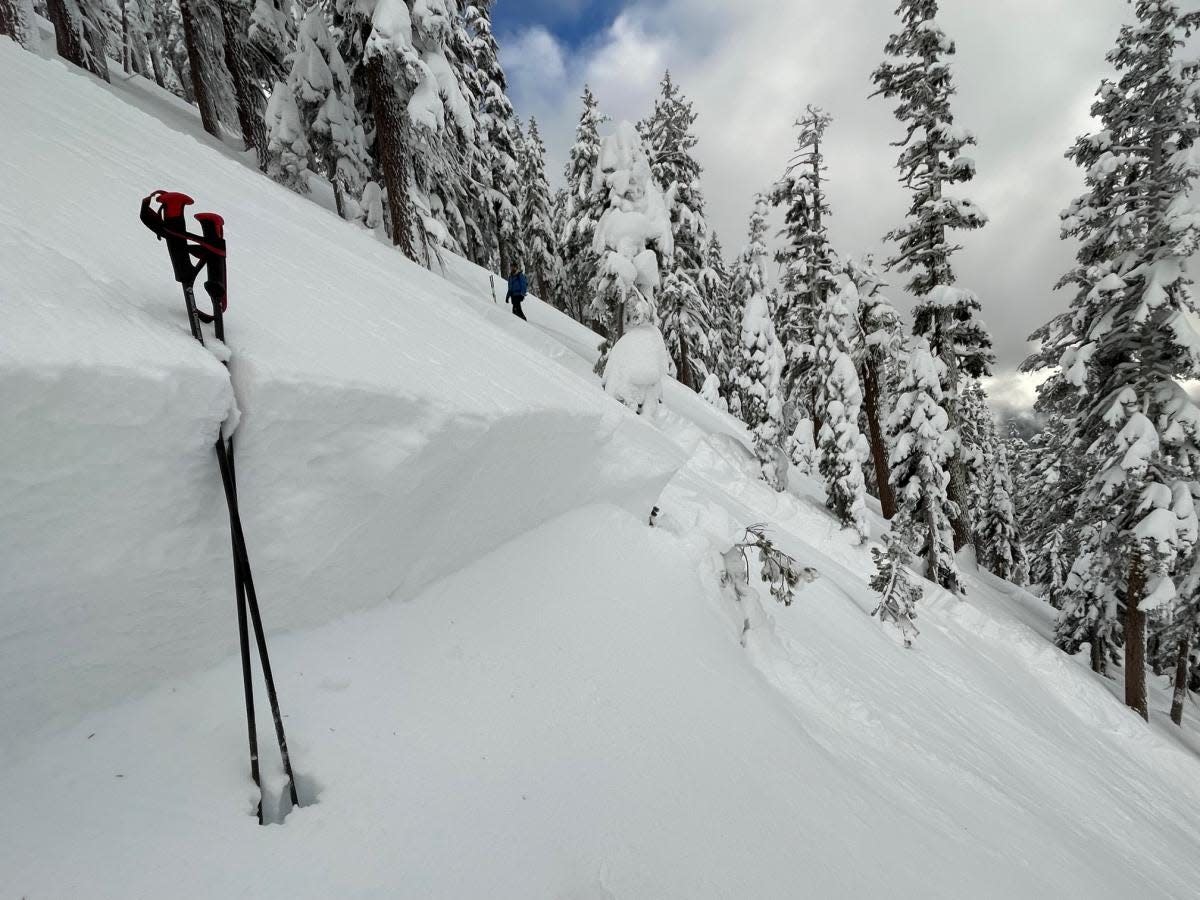3 avalanches fall on Mt. Shasta after winter storms; more snow on the way

Fresh snow falling on top of heavy snow and ice caused avalanches on Mt. Shasta, making conditions hazardous for people recreating in remote parts of the wilderness.
While conditions are improving, there is still a risk more slides could happen next week.
On Friday, Dec. 9, winter storms dropped graupel ― blobs of ice and snow frozen to snowflakes ― in some places on Mt. Shasta, according to the Mount Shasta Avalanche Center.
Then more storms dropped 25 to 35 inches of fresh snow on top of the slippery graupel, creating a light loose layer of snow. Those conditions made it possible for slabs of snow to slide down the mountain.
The graupel layer is stabilizing, but it's possible more avalanches could slide down the mountain this week, the Avalanche Center said. "The highest danger for storm slabs is the 48 hours immediately after the new snowfall."
Three avalanches tumbled snow and ice down North State and Southern Oregon peaks between Dec. 7 and Dec. 12. All failed because of that weak layer of snow, according to the Avalanche Center.
On Dec. 10, a 148-foot wide slab slid down the northeast side of Coyote Butte.
In the afternoon on Dec. 11, a skier triggered a 60-foot slab avalanche on the west side of Gray Butte. It buried the area in two additional feet of snow.
Mt. Shasta Ski Park ski patrol spotted a one- to three-day-old avalanche on Dec. 12 east of the ski park's boundary.
No one was hurt, but all three reported slab avalanches were "big enough to bury, injure, or kill a person," the Avalanche Center said.
No new storms are expected to roll over Mt. Shasta until Monday and Tuesday, Dec. 19 and 20, said Miles Bliss, meteorologist at the National Weather Service in Medford. That storm will be light, with as much as half an inch of new snow.
That doesn't mean there won't be some risk of new avalanches, he said.
On clear days, as the sun hits the top layer of snow, "it forms sort of a crust," Bliss said. That half-inch of new snow could slide off that crust in avalanches.
People should check conditions in the area they plan to visit before they go skiing or snowboarding, climbing, snowshoeing or hiking, he said.
They should also have a signal device with them, a beacon/transceiver, in case they get into trouble, said Lauran Yerkes, information officer at the Shasta-Trinity National Forest.
When people arrive at a site, they should use their poles to probe the snow to see if the top layer moves "before they commit" and ski down the slope, Yerkes said.
Go to the Avalanche Center's website for daily updates at shastaavalanche.org or call 530-926-9617.
Jessica Skropanic is a features reporter for the Record Searchlight/USA Today Network. She covers science, arts, social issues and entertainment stories. Follow her on Twitter @RS_JSkropanic and on Facebook. Join Jessica in the Get Out! Nor Cal recreation Facebook group. To support and sustain this work, please subscribe today. Thank you.
This article originally appeared on Redding Record Searchlight: 3 avalanches fall on Mt. Shasta after winter storms

